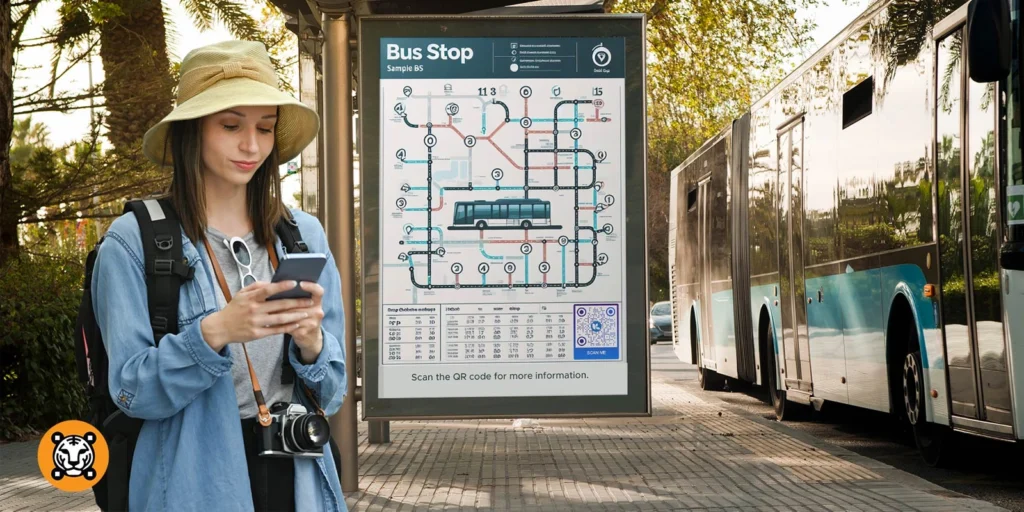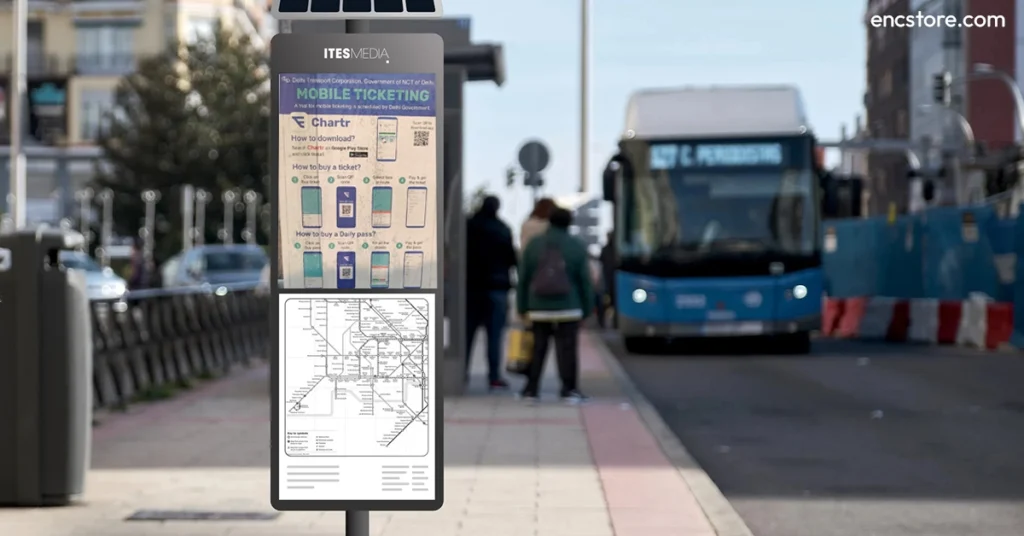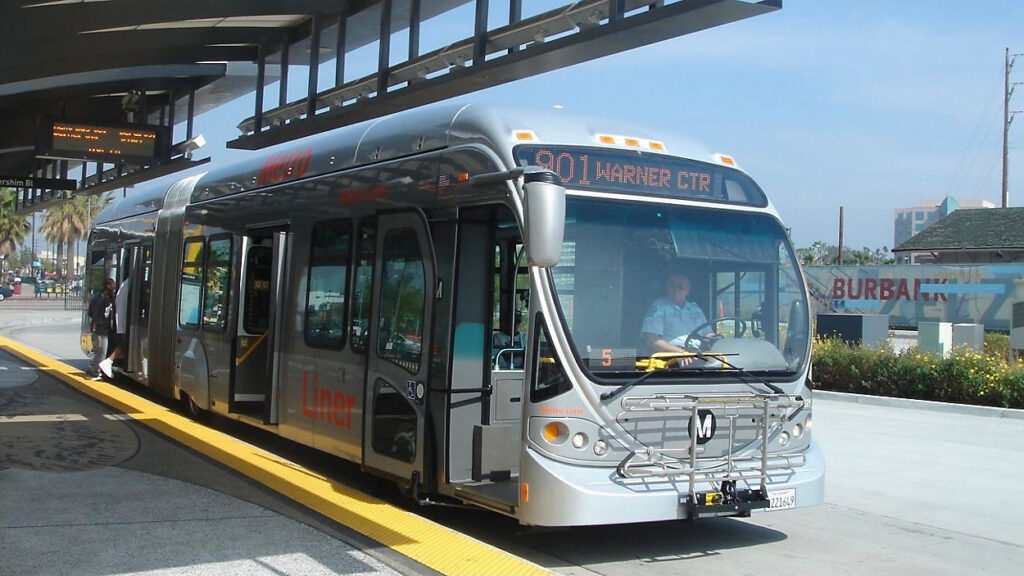San Antonio I am aware that QR codes are now being utilized at bus stops in San Antonio to aid visually impaired commuters. The city has begun implementing QR codes on bus stop signs that, when scanned, provide audio information about the location and bus arrival times. This initiative is a positive step towards ensuring public transportation is more inclusive and accessible for all individuals. It’s wonderful to witness advancements like this making a positive impact on the community.
1. QR codes are being introduced at bus stops in San Antonio to provide commuters with quick access to information and resources.
QR codes are a great way to access information quickly and easily. By introducing them at bus stops in San Antonio, commuters can easily access resources and information to enhance their travel experience. This innovative use of technology provides convenience and efficiency for commuters.
QR codes are a form of bar code that can be scanned using a smartphone camera. By implementing QR codes at bus stops in San Antonio, travelers can easily access information and resources by scanning the code with their phone. This technology offers a convenient method for individuals to retrieve details on bus schedules, routes, and other beneficial resources while they wait for their bus.

QR codes, which are a type of matrix bar code, are designed to be scanned using a smartphone camera, allowing for instant access to information or resources. The recent implementation of QR codes at bus stops in San Antonio offers commuters a convenient way to access important information such as bus schedules, route maps, and other resources with ease. This technology is intended to enhance the overall commuter experience and make it easier to access essential information.
2. These QR codes are being utilized to assist visually impaired individuals navigate the bus system more easily.
QR codes are currently being used to assist visually impaired individuals in navigating the bus system. When scanned using a smartphone, these QR codes deliver audio announcements detailing the bus route, upcoming stops, and potential delays. This innovative technology aims to provide greater independence and accessibility for visually impaired individuals when utilizing public transportation.
When individuals scan the QR code at the bus stop with their smartphone, they can access audio instructions to help them figure out which bus to take and where to get off. This use of technology shows a dedication to making transportation more accessible for everyone in the community.
QR codes are being used to help visually impaired individuals navigate the bus system more effectively. By scanning the QR code with a smartphone, users can access audio instructions and information about bus routes and schedules. This technology is intended to improve accessibility and independence for people with visual impairments, making it easier for them to use public transportation.
3. The benefits of using QR codes for visually impaired individuals include increased independence, access to real-time bus schedules, and the ability to easily locate bus stops and routes.
QR codes provide valuable assistance to visually impaired individuals by increasing their independence and access to important information. They offer the advantage of accessing real-time bus schedules, enabling more efficient travel planning. Additionally, QR codes simplify the process of locating bus stops and routes, making it easier for visually impaired individuals to navigate public transportation systems. In conclusion, the use of QR codes can significantly improve the daily lives of visually impaired individuals.
This technology allows individuals with visual impairments to access real-time bus schedules, find bus stops and routes, and navigate their surroundings with greater ease. It offers a variety of benefits and ultimately improves their daily lives, empowering them to move more freely within their communities.

QR codes provide individuals with visual impairments the ability to easily access real-time bus schedules, locate bus stops and routes, and navigate their surroundings more effectively. This technology offers a range of benefits, ultimately improving their daily lives and empowering them to move more freely within their communities.
4. Testimonials from visually impaired commuters using QR codes have highlighted the convenience
Visually impaired commuters have shared their experiences with using QR codes to navigate transportation systems, highlighting the convenience and accessibility it provides. By scanning QR codes with their smartphones, these commuters can easily access information about bus routes, train schedules, and station layouts, allowing them to travel independently and confidently. This feedback serves as a valuable reminder of the positive impact that inclusive design and technology can have on improving the daily lives of individuals with disabilities.
QR codes have proven to be a valuable resource for visually impaired individuals, providing them with convenience and accessibility. By using QR codes, visually impaired commuters can access important information and navigate their surroundings more easily. Testimonials from these individuals have highlighted the significant impact of QR codes in improving their daily lives and increasing their independence. This highlights the importance of inclusive design and the potential for technology to have a positive impact on individuals with varying abilities.
5. QR codes are improving accessibility for all bus riders by providing quick access to bus schedules, routes, and other important information.
QR codes are revolutionizing the way bus riders access crucial information. By simply scanning the code with their smartphone, passengers can effortlessly view bus schedules, routes, and other pertinent details. This advancement is streamlining public transportation and increasing accessibility for all riders. It serves as a prime example of how QR codes are improving accessibility across various industries.
QR codes are changing the way bus riders can access important information. With a quick scan, passengers can easily find bus schedules, routes, and other essential information, making navigating the public transportation system easier for everyone. This innovation is improving accessibility for all bus riders, providing a convenient and efficient way to access the information they need.

The use of QR codes is on the rise to enhance accessibility for public transportation users. By simply scanning a QR code at a bus stop, riders can conveniently access schedules, routes, and other vital information, allowing them to navigate and plan their journeys with greater efficiency. This technology is particularly advantageous for individuals with disabilities or those who struggle to access traditional information sources. Overall, QR codes are playing a significant role in making public transportation more user-friendly and inclusive for all riders.
6. There are future plans to expand the use of QR codes at bus stops in San Antonio to further enhance the accessibility and convenience for all commuters.
The city of San Antonio has recently unveiled a new plan to expand the use of QR codes at bus stops in order to enhance accessibility and convenience for commuters. This initiative aims to offer easy access to crucial information such as bus schedules and routes, and is a part of the city’s continual endeavors to improve public transportation services. By scanning the QR codes, passengers can swiftly access the necessary information to plan their travels, ultimately making the public transportation system more user-friendly and efficient.
The increased use of QR codes at bus stops in San Antonio is a strategic component of ongoing efforts to enhance accessibility and convenience for all commuters. This expansion is designed to streamline access to vital information about bus schedules and routes, ultimately elevating the overall public transportation experience in the city.

The expansion of QR codes at bus stops in San Antonio is excellent news. This will greatly enhance convenience for commuters by providing easier access to information and services. It demonstrates a dedication to improving accessibility and the overall public transportation experience. It will be fascinating to observe how this expansion progresses and the impact it has on the community.
7. In conclusion, the introduction of QR codes at bus stops in San Antonio has had a positive impact on the community by improving accessibility for visually impaired individuals and all bus riders.
The research conducted on the use of QR codes at bus stops in San Antonio has shown that their introduction has had a positive impact on the community. This includes significant improvements in accessibility for visually impaired individuals and all bus riders. The conclusion is supported by data collected and feedback from community members, indicating that the implementation of QR codes has proven to be a successful and beneficial addition to the bus stop infrastructure in San Antonio.
The implementation of QR codes at bus stops in San Antonio has positively impacted the community by enhancing accessibility for visually impaired individuals and all bus riders. With the addition of audio descriptions of bus stop locations and real-time arrival information, the QR codes have made navigating the public transportation system easier for everyone. This initiative has not only promoted inclusivity but also improved the overall transit experience for all riders.

The research conducted on the use of QR codes at bus stops in San Antonio has shown that their introduction has had a positive impact on the community. This includes significant improvements in accessibility for visually impaired individuals and all bus riders. The conclusion is supported by data collected and feedback from community members, indicating that the implementation of QR codes has proven to be a successful and beneficial addition to the bus stop infrastructure in San Antonio.
Interested in Reading My Article On:Did you know that cosmic rays there is a surprising link between and financial markets?



